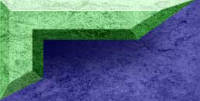|
Three limitations of science: Technology, Money for research and development, and societys values.
Four states of matter: Solid, gas, liquid, plasma.
Four tastes: sweet, bitter, salt, and sour.
Five sense receptors: Cemo, paine, thermo, and mednano.
Fife sences: hearing smelling, taste, seeing, and touch.
Accomidation reflex: focusing/ lens size changes, fades with old age.
Amplitude: loudness.
Anvil: incus second bone in the ear.
Aqueous humor: fluid taht fills the space between the cornea and the lens.
Area: L x W
Astronomer: studys the planets and stars in our solor system.
Astigmatism: defect in the cornea.
Auditory : hearing
Auricle: Fleshy part of the outter ear.
Beacker: measuresliquid volume.
Binocular vision: seeing with bolth eyes.
Biologist: Studies the Earth and people.
Blindspot: the part of the inner eye that you cant see anything from.
Braille: How blind people read.
Chemist: Studies the properties and composition, of substances.
Choroid: Layer between the retina and the sclera.
Cochlea: Contains hearing reseptors.
Conclusion: the result of somthing.
Conductive deafness: interferce with transmitting vibrations.
Cones: Cone shaped light sensors.
Conjunctive: Membrane that pertects the eye.
Convergence reflex: Looking with both eyes.
Cornea: Transmits part of the eye.
Data: Facts collected during an observation or experiment.
Data table: A chart with all the data collected on it.
Decibles: Measurment for sound.
Density: Density = Mass / volume.
Depth perception: how far away something is.
Densitised: gotten used to.
Doppler effect: When siren is near and then far away.
Ear canal: cureys sound waves to the ear drum.
Ear drum: converts sound waves in to energy.
Ecologist: Studies living things and their enviroment.
Energy: Change in moleculslar motion for ability to work.
Eustachian tube: Connects the inner ear to the troat.
Experiment: Test.
Fact: true
Farsighted: being able to see far away.
Falsk: masures liquid volume
Fovea: A small area on the retina where the shapest focus occurs.
Freqency: Pitch
Geologist: Studies the structers of the Earth.
Gradutaed cylinder: measures liquid volume.
Gram: base unit of wieght.
Graph: Data table/ chart
Hammer: one of the smallest bones in the ear.
Hertz: measurment for frequence.
Hypothesis: educated guess
inertia: energy
Inference: someting you already know.
Iris: controls how much light goes in to the eye.
K.H.D.B.D.C.M.: Kilo, hecto, deca, base unit, deci, centi, milli,.
Law: something that reacures everwhere.
Lens: aids in focusing light raise on to the retina.
Liter: base unit
Mass: the weight of something.
Mechanical energy: energy of motion that always does work.
Medium: solid, liquid, gas, something that vibrations can go through.
Membrane: thin piece of tissue.
Meniscus: the level line of water.
Meteorologist: studies weather.
Meter: Base unit
Metrics: science measurments
Monocular vison: using only one eye.
Multi-line gragh: line graph with more than one gragh.
Nearsighted: Being able to see near but not far away.
Nerve: Sends electrical signals.
Nociceptor: paine reseptor.
Nocturnal: seeing in the dark.
Observation: made using one or more of your fife senses.
Oceanographer: Studies the ocean.
Olfaction: Moselmeull.
Optial: seeing
Ossicles: three smallest bones in the body.
Photopupilary reflex: change in pupils size.
Physician: treats diseases.
Physicist: studies matter and energy.
Pinna: fleshy part of the other ear.
Pitch: how many sound waves are in a sound.
Pupil: small opening in the eye that lets light through.\
Qualitative data: non # data.
Quantitative: # data
Random: no pattern.
Retina: in which images are displayed on.
Rods: lets you see dark light black and white.
Scientific method: system used by scientists.
Scientists: uses pohet system.
Sclera: white of the eye.
Semi-circular canal: helps maintain balance.
Sense receptors: helps the brain to sense whats going on.
Sensorineural deafnass: Damage to the cochlea, auditory nerve, hearing reseptors, or pathways.
Sign language: Language used by deaf people.
Sound waves: in which sound travels.
Stirrups: The third smallest bone in the ear.
Surface area: area of all sides.
Tapetum: silvery layer in the back of your eye in nocturnal animals.
Tearducts: Cleans the eyes.
Technology: use of science.
Test tube: holds chemicals
Test tube rack: Holdes test tubes.
Theory: possible answer
Thermometer: Measures energy heat, and cold.
Thermoreceptoers: Temperature receptors.
Touch receptors: mechoreceptors in your skin.
Trible beam balance: scale
Variable: changes.
Vibrations: Movement of atoms and molecules.
Vitreous humor: liquid that helps the eye keep its shape.
Volume: L X W X H
Water displacement method: volume of added shapes/ solids
Weighing paper: protects the scale.
Weight The mass of something.
Wrap-a-round vision: to beable to see almost 360 degrees around.
X-axis: left to right on a graph.
Y-axis: up and down on a gragh.
Zoologist: Studies animal behaviors.
|

